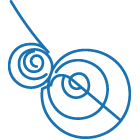A Theory of Quantum Instruments
Abstract
Until recently, a quantum instrument was defined to be a completely positive operation-valued measure from the set of states on a Hilbert space to itself. In the last few years, this definition has been generalized to such measures between sets of states from different Hilbert spaces called the input and output Hilbert spaces. This article presents a theory of such instruments. Ways that instruments can be combined such as convex combinations, post-processing, sequential products, tensor products and conditioning are studied. We also consider marginal, reduced instruments and how these are used to define coexistence (compatibility) of instruments. Finally, we present a brief introduction to quantum measurement models where the generalization of instruments is essential. Many of the concepts of the theory are illustrated by examples. In particular, we discuss Holevo and Kraus instruments.
Quanta 2023; 12: 27–40.
Full Text:
PDFDOI: https://doi.org/10.12743/quanta.v12i1.233
ISSN: 1314-7374

